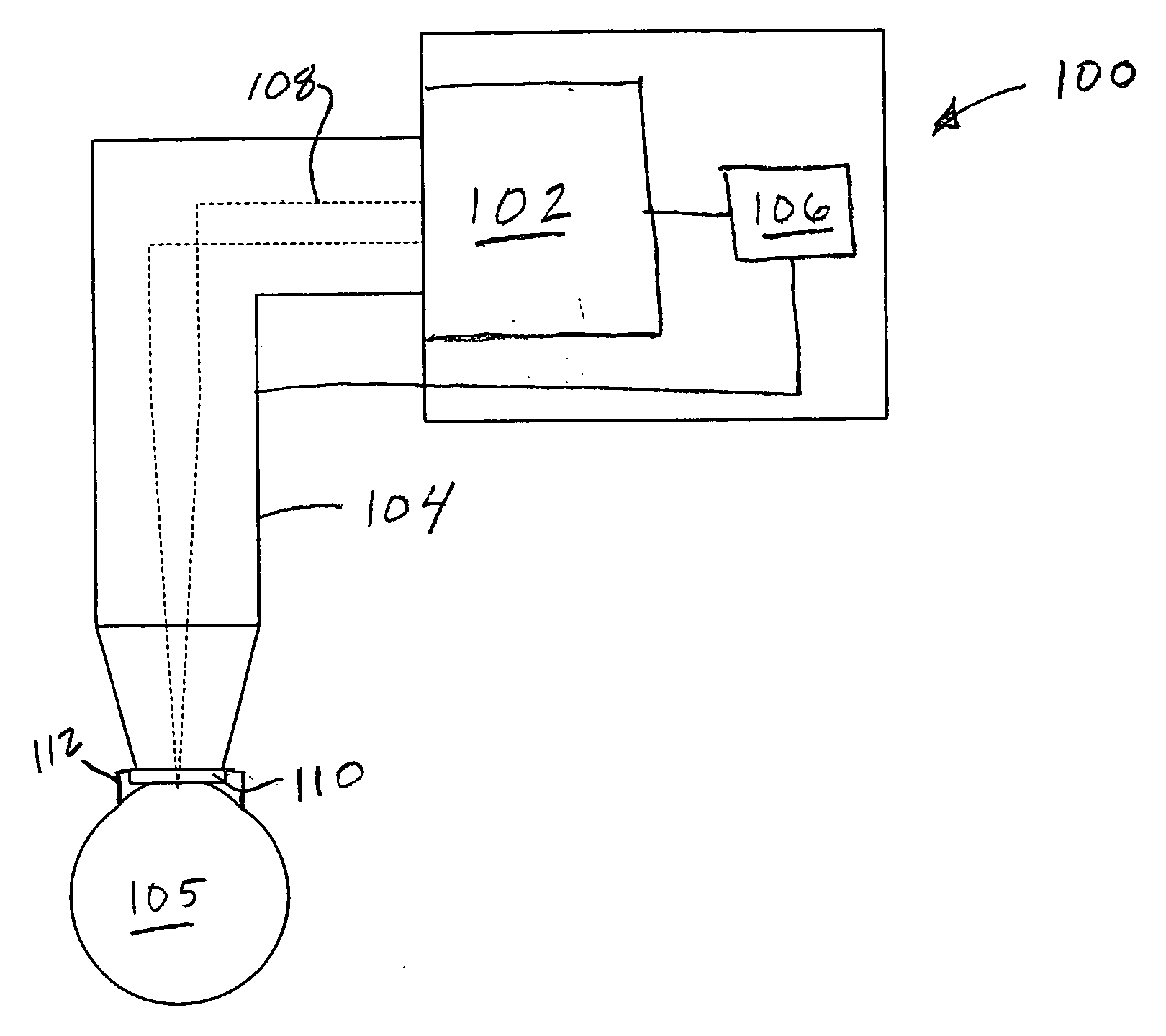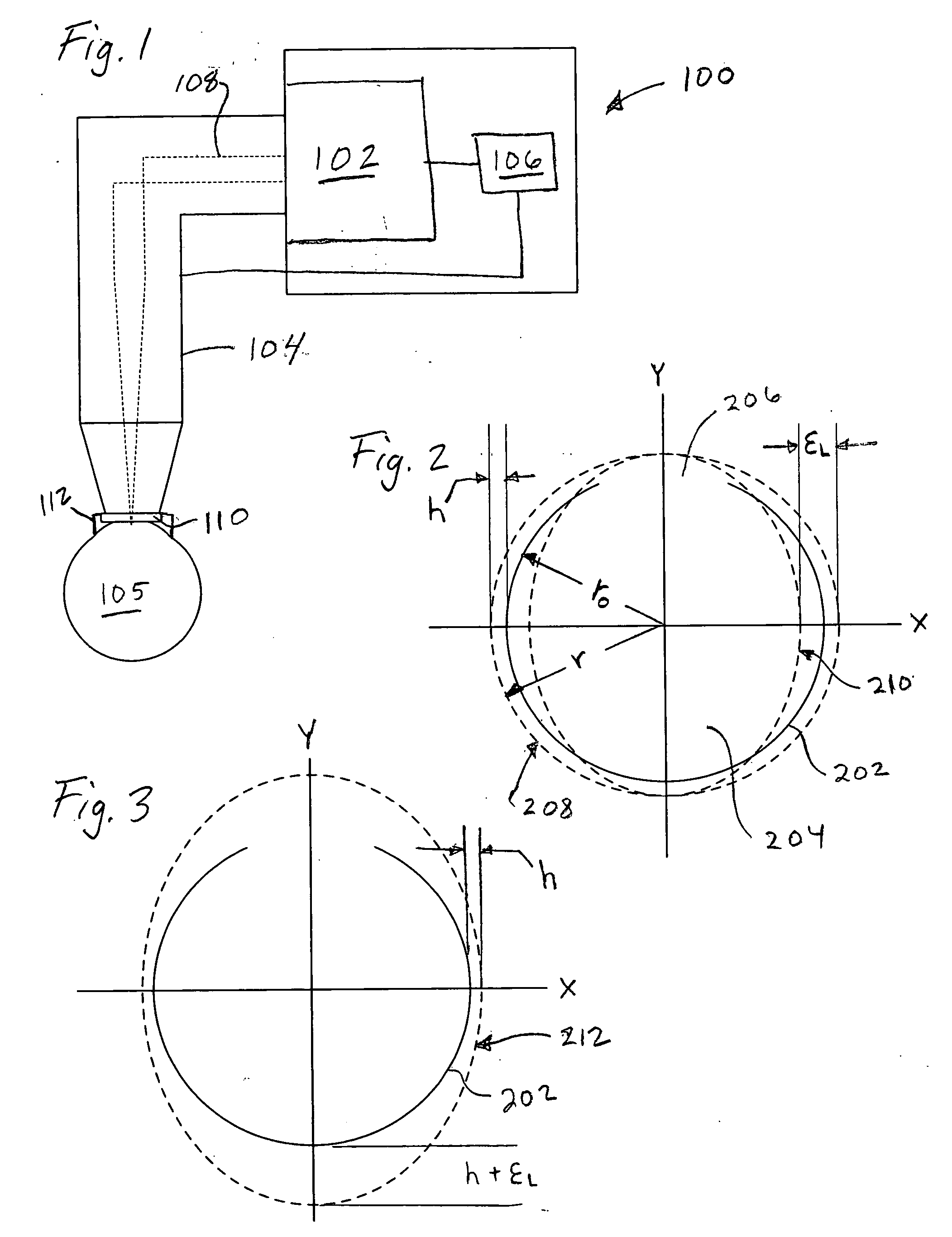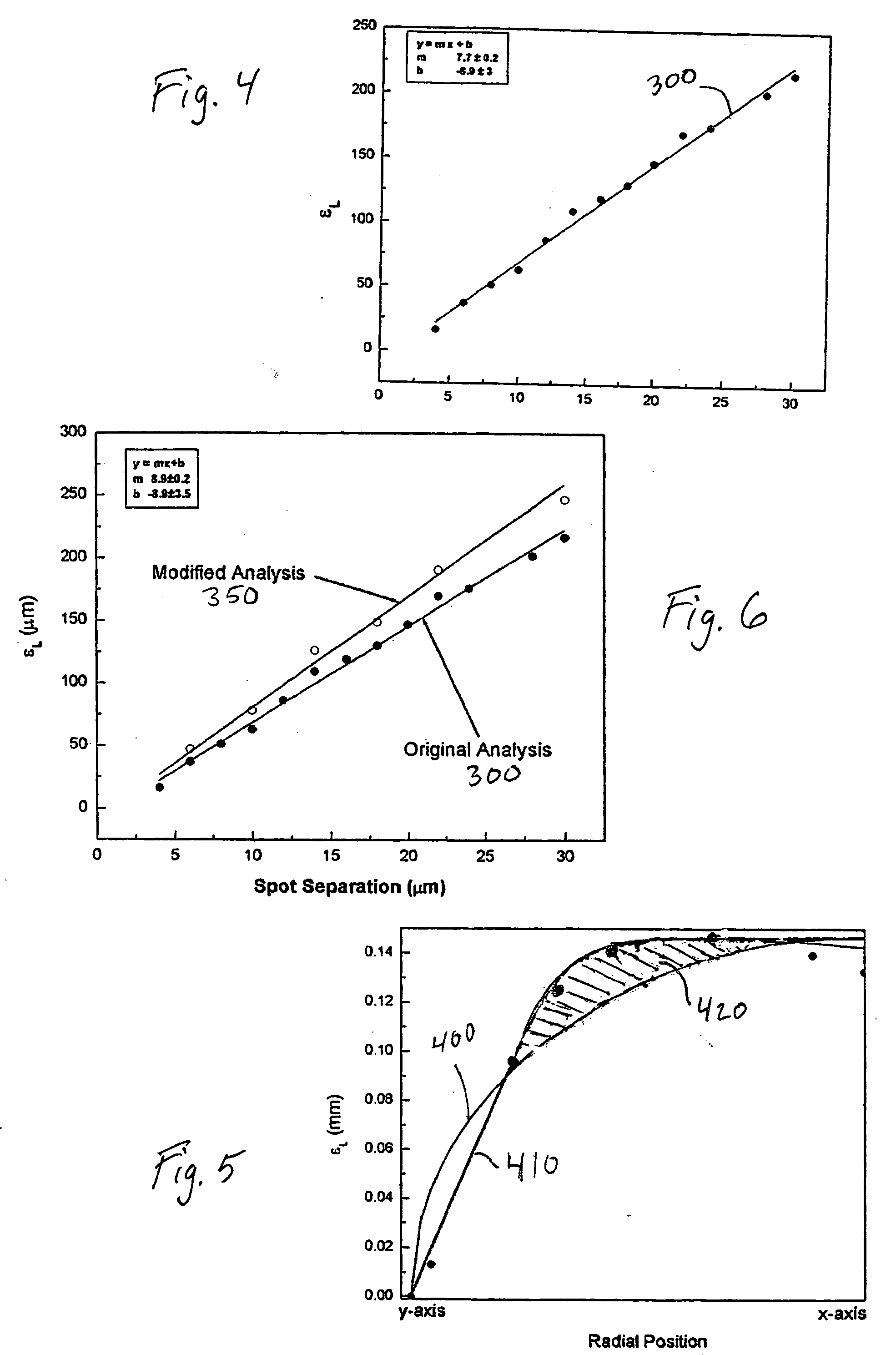Adaptive pattern correction for laser scanners
a laser scanner and pattern correction technology, applied in the field of laser scanners, can solve problems such as distortion of actual scan pattern, and achieve the effect of increasing scan rate and preserving scan pattern fidelity
- Summary
- Abstract
- Description
- Claims
- Application Information
AI Technical Summary
Benefits of technology
Problems solved by technology
Method used
Image
Examples
example
[0032] An FS2 30 kHz laser was programmed with different radial offset factors for spot separations of 4, 10, 16, 22 and 30 μm, using its factory settings. The laser was configured such that a radial offset of zero generated a theoretically (i.e., ignoring galvanometer lag) circular scan pattern. Entry of a positive radial offset would produce a theoretical elliptical output according to Eq. 1 above. The FS2 laser could also be programmed with an amount of horizontal offset, regardless of spot separation. Factory settings for the FS2 laser were determined and set using the following methodology: [0033] 1. Set the horizontal offset to 100 μm. [0034] 2. Set the radial offset to zero for all spot separations. [0035] 3. Cut 9 mm patterns in glass slides at three spot separations, e.g., 6, 12 and 18 μm. [0036] 4. Measure the amount of raster-side (x-axis) overlap at the 0° and 180° positions. [0037] 5. Select the set of values for the position (i.e., 0° and 180°) exhibiting the most unde...
PUM
 Login to View More
Login to View More Abstract
Description
Claims
Application Information
 Login to View More
Login to View More - R&D
- Intellectual Property
- Life Sciences
- Materials
- Tech Scout
- Unparalleled Data Quality
- Higher Quality Content
- 60% Fewer Hallucinations
Browse by: Latest US Patents, China's latest patents, Technical Efficacy Thesaurus, Application Domain, Technology Topic, Popular Technical Reports.
© 2025 PatSnap. All rights reserved.Legal|Privacy policy|Modern Slavery Act Transparency Statement|Sitemap|About US| Contact US: help@patsnap.com



